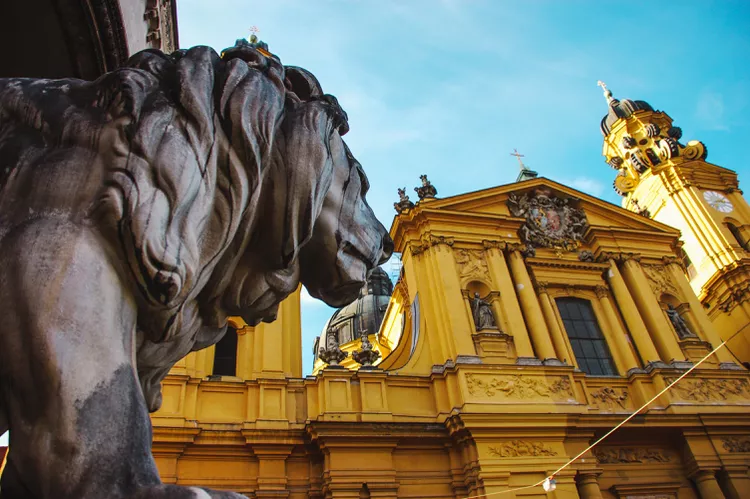1. Overview of Munich
Munich is one of the most celebrated destinations in Europe. From its raucous Oktoberfest and vibrant beer gardens to its colorful historic sites, this city offers an array of experiences for every traveler. Below are valuable tips designed to save your travel budget from stress and strain.
2. When to Visit
If you’re keen on experiencing Oktoberfest, plan to arrive in September, when festivities commence. Higher prices and large crowds are expected during this time, so it’s prudent to have an escape plan. Rail services connect the city with nearby destinations such as Salzburg (approximately 90 minutes away, sometimes less than €20) or Vienna (usually requiring an overnight stay, about four hours each way, with tickets starting at €29).
Conversely, if you don’t mind the colder winter months, you’ll find lower prices and minimal lines at attractions. Generally, snowfall here exceeds that of other regions in Germany.
3. Where to Eat
Munich is home to Germany’s largest student population, approximately 100,000, ensuring a variety of affordable dining options in the university districts. Neighborhoods such as Maxvorstadt, which borders several campuses, are filled with restaurants that cater to budget-conscious diners. Another area worth exploring is Gärtnerplatz.
The city’s numerous beer gardens serve a range of budget-friendly meals. Don’t miss trying hendl, a delicious roasted chicken dish available at reasonable prices.
Additionally, many beer gardens allow patrons to bring their own food if they purchase drinks. As in any European city, fresh cheese, bread, and other picnic staples can be found at local markets and are often priced lower than in North America.
4. Where to Stay
Accommodation prices in Munich tend to be higher near the city center. When searching for lodging options in Munich, note the various types available in Bavaria, such as pensions, which are smaller bed and breakfast establishments. Owners often provide warm hospitality and valuable tour recommendations, but amenities like pools and in-room bathrooms may be limited.
Keep an eye out for information kiosks at train stations and public areas, which can assist in finding reasonably priced rooms during busy periods, albeit for a small fee. The city’s main train station, Hauptbahnhof, is a great starting point, where many budget accommodations are available, often including breakfast with the price.
For business-class hotel options, platforms like Priceline might help you secure a favorable deal. Notably, Residence Inn chose Munich for one of its first European locations, receiving positive reviews and offering good access to public transportation despite being outside the city center.
Exploring Munich’s Airbnb listings can also yield numerous budget options; recent searches revealed multiple entries for under $25 USD per night, with even more options available at slightly higher price points.
5. Getting Around
The Munich U-bahn provides an economical way to navigate the city. If planning an extended stay, consider purchasing a Mehrfahrtenkarte or “multiple trip ticket” for convenience. Blue tickets accommodate adults, while red tickets are for children. Tageskarte or “day tickets” offer unlimited travel for 24 hours from their purchase time. Munich’s Hauptbahnhof is just a 15-minute walk from the Old Town and Marienplatz.
For visitors spending longer periods in Munich, the S-bahn, U-bahn, and buses form an integrated network known as the MVV. A weekly IsarCard costs €15 for two zones (rings), with prices increasing for broader geographic areas.
6. Munich Nightlife
Historically, Schwabing has been Munich’s artistic district, attracting actors, painters, and night owls alike. While some may argue it has lost charm, it remains a vibrant area after dark, featuring trendy nightclubs and diverse restaurant options. Although the nightlife may not rival that of larger cities like Berlin or Amsterdam, there is still plenty to keep you entertained.
For specific club information, the Nightlife City Guide can offer insight into local nightlife destinations, hours, and specialties.
7. Top Attractions
Marienplatz serves as the heart of Munich’s Old Town. Adjacent to this historic square is the Frauenkirche, meticulously restored after World War II. To the south, through the Isar Gate, lies the Deutsches Museum, the largest science and technology display worldwide. Tierpark and the zoo are close by, while heading north to the Olympiapark U-bahn stop will grant you access to the site of the 1972 Olympics and the BMW World Headquarters.
8. More Munich Tips
- Break larger museums into sections. For instance, the Deutsches Museum is extensive, often requiring two full days to appreciate fully. Focus on your areas of interest and save others for another visit.
- Practice patience and vigilance at Oktoberfest. Public intoxication can be problematic, so safeguard your belongings during peak times.
- Learn basic German phrases. The phrase “Sprechen Sie Englisch?” can be invaluable for politeness. Many locals appreciate attempts to communicate in their language, and sometimes, menus in German are less expensive than their English counterparts.
- Use Munich as a launching point for other explorations. Apart from Salzburg, the enchanting Romantic Road trip is a viable day journey, allowing you to explore the well-preserved medieval city of Rothenburg. EurailPasses offer great value for travel through this scenic area, including returns from Wurzburg. Notably, the Dachau concentration camp is a short trip north from Munich and serves as a poignant reminder of Germany’s history.
- Understand that Munich and Bavaria are distinct. While Munich embraces its Lederhosen image, many other German cities do not share this specific cultural portrayal. Enjoy the unique attractions, linguistic nuances, and rich historical context that the region presents.




